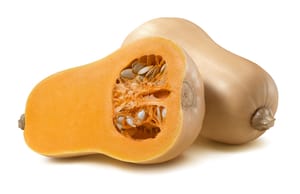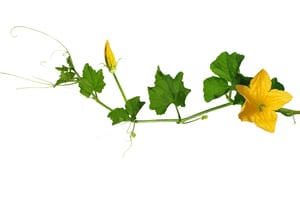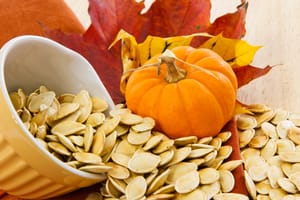It is important to educate yourself on proper care for your piggy. By feeding your pet a balanced diet, they will be more playful and healthier.
Your pet is part of your family, and the right diet can help them live a long life. I’ve broken down the different types of pumpkin and other foods you can safely feed to your pet.
Nutrition
One cup of cooked pumpkin (245 grams) contains:
- Calories: 49
- Fat: 0.2 grams
- Protein: 2 grams
- Carbs: 12 grams
- Fiber: 3 grams
- Vitamin A: 245% of the Reference Daily Intake (RDI)
- Vitamin C: 19% of the RDI
- Potassium: 16% of the RDI
- Copper: 11% of the RDI
- Manganese: 11% of the RDI
- Vitamin B2: 11% of the RDI
- Vitamin E: 10% of the RDI
- Iron: 8% of the RDI
- Small amounts of magnesium, phosphorus, zinc, folate and several B vitamins.
Besides being packed with vitamins and minerals, pumpkin is also relatively low in calories, as it’s 94% water. In my premuim guide you will find a list of fruits and vegetables that guinea pigs can and can’t eat and you will have a better understanding of their likes/dislikes.
Can guinea pigs eat pumpkin?
Yes, you can safely feed your pet pumpkin. The majority of a cavy’s diet should consist of hay and pellets, but you can feed your pet small amounts of fruits and vegetables. If you’re making a pumpkin pie for your family, it is okay to feed your cavy small bites of raw pumpkin.
Your pet should only eat pumpkin once or twice a week. Too much pumpkin can cause health issues for your pig, including bloating and gas.
Offer a small amount of pumpkin to your cavy and see if they like it. If they take to it, you can feed them a little bit once a week as a treat. Just be sure to wash all fruits and vegetables before feeding them to your pig as I recommend in all my posts.
Can guinea pigs eat butternut pumpkin?

Butternut squash, or butternut pumpkin, is safe for guinea pigs. Many people think butternut squash is a vegetable, but It is really a fruit. You cavy can eat butternut pumpkin when it is ripe.
Never cook fruits or vegetables before feeding them to your pet. Guinea pigs have very sensitive stomachs and cannot digest cooked food properly.
Whether or not your pig eats squash is up to them. Not all cavies like butternut pumpkin.
If you try to feed it to your pet and they do not eat it, don’t be alarmed. Just remove the uneaten squash to prevent your pig from overeating later.
If you give your cavy butternut pumpkin, be sure to wash the food thoroughly. Fruits and vegetables from the store often have small amounts of pesticides or other chemicals that can harm your guinea pig’s stomach.
Also, butternut pumpkin should only be fed to cavies every once in a while. Butternut squash is high in oxalic acid, which can damage your pet’s stomach.
Are Pumpkins vegetables or Fruits?
Pumpkins are fruits, Pumpkins and squash are both types of gourd, a plant that grows on vines and produces large edible fruit. Other gourds include cucumbers, melons and zucchini. Pumpkins are actually a subspecies of squash, which makes them both fruits and vegetables!
What Makes Them Fruits?
The U.S. Department of Agriculture classifies pumpkins as fruits because they grow from flowers that produce seeds. The seeds can be planted to grow more pumpkins. People eat these seeds too — pumpkin seeds are an important part of many cuisines around the world.
Can guinea pigs eat pumpkin insides?
Your pet can safely eat pumpkin insides from a raw pumpkin. Cavies can also eat the pumpkin rinds or skin in small amounts.
Only feed your pig raw pumpkin because cooked food is not safe for cavies. Unfortunately, your pet cannot eat pumpkin pie this holiday season.
It is also not a good idea to give your pig pumpkin puree from a can because it contains sugar and preservatives that are not safe for your pet’s stomach.
Feed your guinea pig small bites of raw pumpkin, no more than one-inch in size. It is safe to leave the skin or rind on the pieces.
Giving your pet the “pulp” in the middle of the pumpkin might be messy, so it is usually best to stick to the hard part of the pumpkin closest to the rind.
Again, your pet may not like the pulp or harder insides of the pumpkin. If your pig does not eat the pumpkin, there is nothing wrong.
Give them time to smell and taste the food. If they still do not eat it, just remove the food from their crate and feed them something else.
Can guinea pigs eat pumpkin stems?

Yes, you can feed your cavy pumpkin stems. Be aware that pumpkin stems are very high in calcium, so you should only feed your pig small amounts.
Guinea pigs usually love too much on the leafy stems of pumpkins, and it can be a safe treat for your pet every once in a while.
Guinea pigs only need a small amount of calcium for a balanced diet. Feeding your pet too many pumpkin leaves or stems can cause serious health issues.
Your piggie may develop bladder stones or kidney stones. These problems are very painful for your cavy and can result in costly medical bills.
The safest way to feed your pet pumpkin stems is to only give them a few bites at a time. If you provide your pet with too many stems or leaves, they will overheat and make themselves sick.
Thoroughly wash the pumpkin stems and leaves and let your pig take a few bites. If they enjoy the food, it can be used as a small treat from time to time.
Are pumpkin seeds bad for guinea pigs?

Pumpkin seeds are not safe for cavies. Your pet can damage their teeth by chewing on pumpkin seeds, and the seeds can hurt their throats when they try to swallow.
While people love to roast pumpkin seeds, especially in the fall, this treat is not safe to feed to your pet.
You should read the ingredients of your guinea pig pellets very closely. Just because a product is sold in pet stores does not mean it is safe for your pig.
Nuts and seeds should not be feed to guinea pigs because their digestive systems cannot handle the food. There is also a lot of starch and sugar in some nuts, which can cause diarrhea, bloating, and other serious issues.
Pumpkin seeds are high in fat – another reason you should not feed them to cavies. Guinea pigs do not regulate themselves when they eat, so they often overeat which leads to weight problems.
Fatty foods can cause your pet to gain weight quickly. No matter what you feed your pet, it is important to track your pet’s weight. This will help you determine if your pig is gaining too much weight for their size or age.
Look this video how those guinea pigs eat a pumpkin!
What should guinea pigs eat?
At this point, you may be wondering what you can safely feed your guinea pig. If you are a new pet owner or looking to enrich your pet’s diet, it is important to research the proper diet for your pig. Also, check whether a food is safe for pigs before feeding it to your pet.
I wrote a guide for all what can a cavy eat and not eat that can help you.
The most important part of your cavy’s diet is vegetables. Your pig needs three servings of vegetables, including a leafy green, every day.
Review all ingredients in store-bought hay and pellets to ensure they are safe for your pet.
It is okay to serve them fruit once or twice a week as a treat. Your pig can eat small amounts of:
- Apples check my article, I wrote about: can guinea pig eat apples.
- Blueberries
- Bananas check my article, I wrote about: can guinea pigs eat bananas
- Oranges
- Melons
- Strawberries
- Other safe fruits
Cut the fruit up into tiny, bite-sized pieces and offer your pet a small amount to see if they enjoy it. Introducing new foods into your pig’s diet should always be done slowly.
Are there foods guinea pigs shouldn’t eat?
There are some foods you should never feed your cavy. Besides pumpkin seeds and other nuts, avoid giving your pet any “human treats.” You may be tempted to share your snacks with your pet, but this is usually a bad idea. Cavies have sensitive stomachs and cannot handle human food.
Never give your pet the following foods:
- Avocado
- Bread
- Candy
- Cereal
- Chocolate
- Crackers
- Onions
- Pasta
These are just some of the items that can cause serious health issues for your pig, and there are many more. Feeding your cavy something that is not safe can result in bloating, diarrhea, gas, or even death.
Conclusion
Foods that are high in fat and sugar are not safe for pigs either. These foods will only make your cavy eat too much and become overweight.
Monitor the levels of sugar and fat your pet eats each day to provide proper care for their diet. Caring for your pet means focusing on what they eat and making sure everything is safe for cavies.
Finally, cavies cannot handle cooked food or meat. Your piggy is an herbivore, meaning they do not eat meat or dairy products of any kind. Their stomachs cannot handle this food, and it is likely they won’t even enjoy eating it.
Cooked foods, including cooked vegetables, are not safe for your piggy. You release different nutrients and create different food textures when you cook food. Many vegetables are safe for cavies when they are raw, but they cannot be served cooked.
You love your pet, and you want to give them the most nutritious and delicious foods. What is good for humans is not always great for your pig. Your cavy can enjoy small amounts of pumpkin once a week, including the leaves and stems.
Avoid giving your pig pumpkin seeds or other foods that could harm their digestive system. If you feed your pet properly, they will be happy and healthy for a long time!

Lydia King is a huge animal lover and has always been fascinated with learning about the animal kingdom. She enjoys writing about anything animal related from scientific information about rare species to animal references in pop culture.












